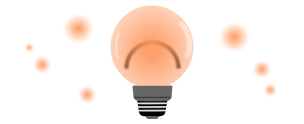Find out about fractals and how you may apply them to your trading strategy

What Is a Fractal in Trading and How to Use It
So you’ve heard about fractals in trading but still aren’t quite sure what they are or how to use them. Don’t worry, we’ve got you covered. Fractals are patterns that repeat at every scale, from the smallest to the largest. In trading, fractals help identify potential reversal points in the market. They can uncover hidden support and resistance levels that you may miss otherwise.
The key is finding fractals that repeat over and over, at multiple time frames. When you spot these fractal patterns forming at key levels, there’s a good chance the price will reverse. The trick is knowing which fractal patterns matter most. In this article, we’ll show you the three fractal patterns that can boost your trading profits, how to spot them, and how to use them to make better entries and exits.
Sound good? Let’s dive in and explore the fascinating world of fractals in trading. By the end, you’ll have a new tool in your trading toolkit to give you an edge in the markets.
What Is a Fractal in Trading?
A fractal is a pattern that repeats at every scale. In trading, fractals are indicators that help identify reversal points in the market. They can help you spot good entry and exit points for your trades.
How Fractals Work
Fractals are made up of a minimum of five consecutive bars that have the highest high and lowest low in the middle with two lower highs and two higher lows on each side.
Once a fractal forms, it means a short-term trend reversal is likely. If it’s a bullish fractal (the middle bar has the highest high), it indicates the trend may start heading up. A bearish fractal (lowest low in the middle) means the trend could begin moving down.
Fractals are most useful in volatile, ranging markets where price is swinging up and down. They can help identify reversals early so you can jump in for a quick profit. However, in strong trending markets, fractals may signal reversals that don’t actually occur.
Using Fractals Effectively
For the best results:
- Look for fractals forming on higher timeframes like the 30-minute or 1-hour charts. These provide more reliable signals.
- Wait for a fractal to form and then for price to move beyond the high or low of the middle bar. This confirms the reversal and trend change.
- Use fractals with other indicators like moving averages, MACD or RSI to get confirmation. A fractal combined with an overbought or oversold signal is especially powerful.
- Set a stop loss in case the reversal fails. Fractals don’t always result in sustained trend changes, so manage your risk.
With practice, fractals can become an useful tool for spotting reversals and jumping into trends early. But always exercise caution and look for confirmation from other indicators.
Types of Fractals and How to Identify Them
There are two main types of fractals in trading: reversal and continuation. Identifying them correctly can help determine potential entry and exit points.
Reversal Fractals
Reversal fractals indicate a potential trend reversal. They form when a new high or low fails to exceed the previous high or low, signaling the current trend may be ending.
For example, in an uptrend, if a new high fails to exceed the previous high, it indicates buyers are losing control and a reversal downward could happen. In a downtrend, if a new low fails to exceed the previous low, it signals sellers are losing steam and an upward reversal may be on the horizon.
Continuation Fractals
Continuation fractals suggest the current trend may continue. They form when a new high or low exceeds the previous high or low.
For instance, in an uptrend, if a new high exceeds the previous high, it indicates buyers are still in control and the upward trend will likely persist. Similarly, in a downtrend, if a new low falls below the previous low, it signals sellers remain dominant and the downward trend should continue.
By properly identifying reversal and continuation fractals, you can anticipate potential changes or extensions in trend. Combine fractals with other indicators like support and resistance levels to improve your analysis. With regular practice, spotting and using fractals can become second nature.
Fractal Trading Strategies and How to Use Fractals
Fractal trading strategies utilize price patterns that repeat at different scales to determine entry and exit points. Once you spot a fractal pattern forming, here are a few ways you can trade on it:
Enter at the breakout
wait for the price to break out of the fractal pattern in the expected direction. Place a buy order just above the upper fractal point or a sell order just below the lower fractal point. The breakout signals the pattern is continuing as expected. Ride the momentum as the price moves in your favor.
- Exit the trade if the price reverses by a certain percentage, like if it pulls back 50% of the breakout move.
- Or use a trailing stop loss to lock in profits as the price continues moving.
Fade the fractal
This is a riskier strategy where you bet against the expected breakout direction. Place an order in the opposite direction of the pattern just before the breakout. If the breakout fails, you can capture profits from traders trapped in losing positions. However, if the breakout succeeds, you’ll be in a losing trade, so tight stop losses are key.
Wait for confirmation
Rather than trading the initial breakout, wait for confirmation that the price is moving in the expected direction before entering. For example, if an ascending triangle is forming, wait until the price breaks out and then rises X% from the breakout point before buying. This can filter false breakouts and increase the probability of catching a strong move.
Using fractals in your trading strategy can help determine critical support and resistance levels, spot potential reversals, and find great entry and exit points. With some practice analyzing fractal patterns, you’ll be leveraging them to improve your trading.
Conclusion
So there you have it, a quick introduction to fractals and how traders analyze them. While fractals may seem complex, the core idea is simple: look for self-similar patterns that repeat at multiple scales. Once you start seeing fractals emerge on price charts, a whole new world of trading opportunities can open up. The key is finding the right fractal for the right market and time frame that aligns with your trading style. With practice, fractal pattern recognition can become second nature and help give you an edge in the markets. So keep at it, start small, learn to recognize the patterns, and fractals could soon become an invaluable tool in your trading arsenal.
Test
How do the fractals look on the chart? Like…



